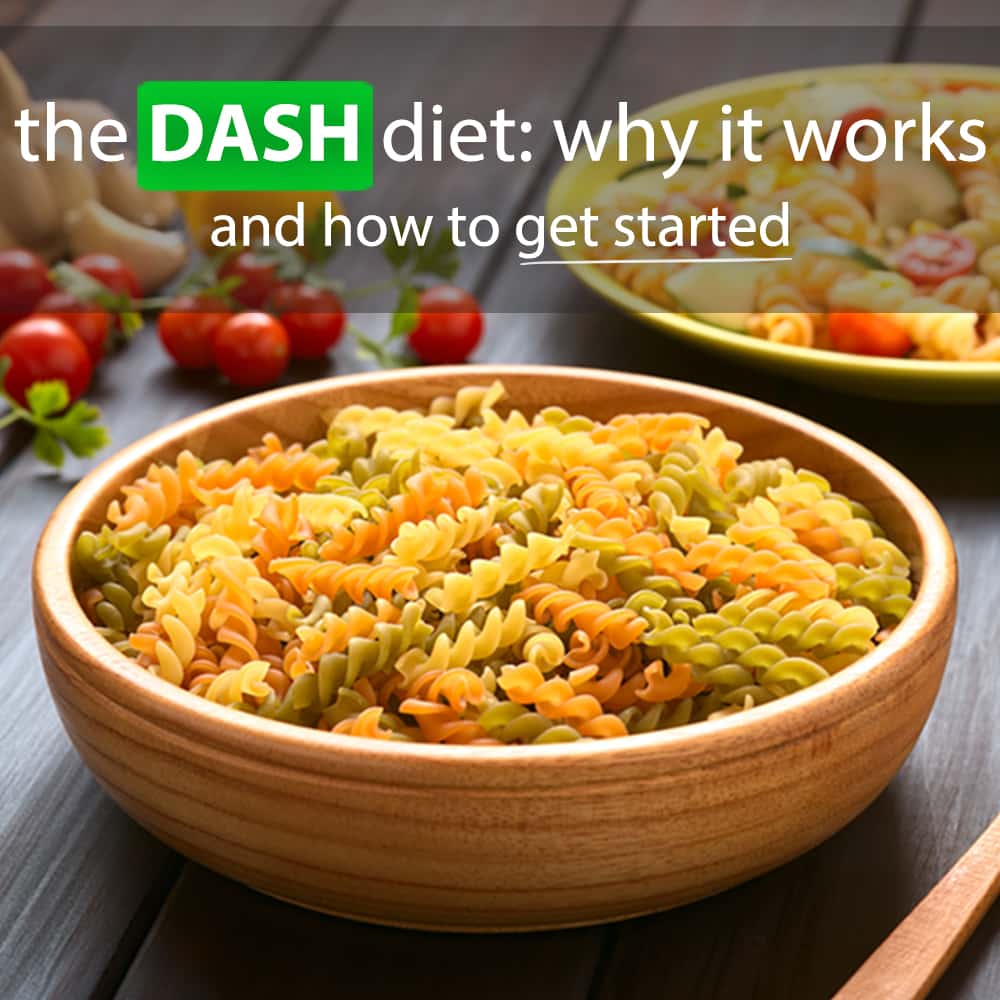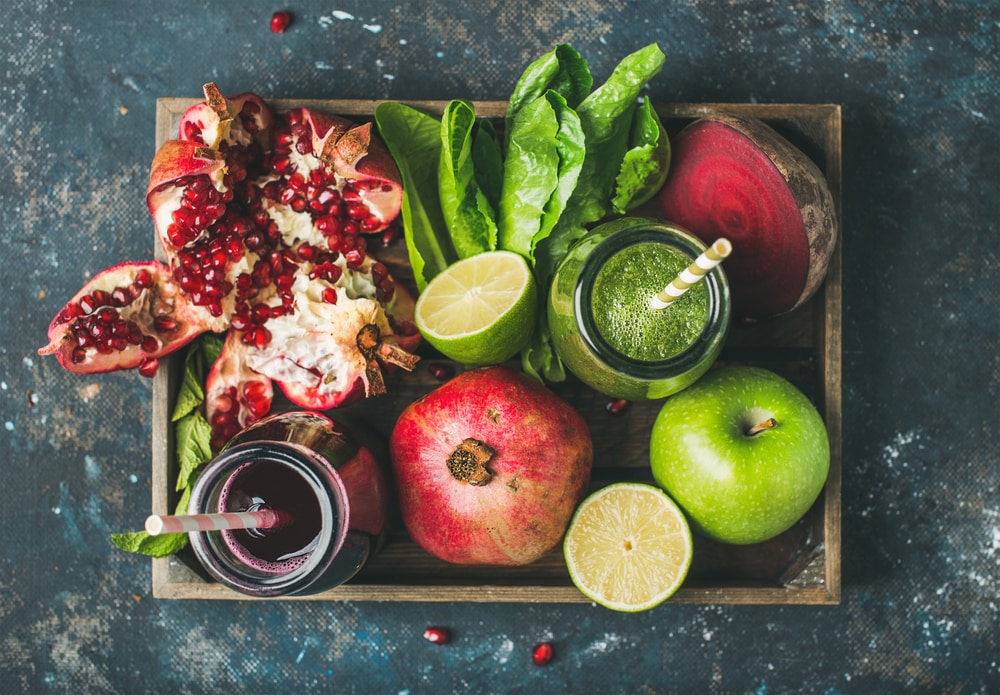Have you tried diet after diet, only to end up back right where you started every time? So many diets promise you’ll lose weight fast, or burn more fat, or flush toxins from your body. If you’re looking for a diet that might actually help you achieve your health and nutrition goals, you might want to consider trying the DASH diet.
Unlike many other diets out there, DASH doesn’t make any false promises. There are actually a number of scientifically proven ways it could make you healthier. Though its primary goal isn’t to help you lose weight, it’s still a possible side effect. It’s one of the top diets in the world — and the reasons why may surprise you.

What is the DASH diet?
The Dietary Approaches to Stop Hypertension (DASH) diet, an evidence-based approach to healthy eating unlike most diet plans you’ve seen before. Originally designed to lower hypertension, or high blood pressure, DASH is now considered a lifelong healthy eating plan beneficial for everyone, whether they’re dealing with a chronic illness or just want to lose weight.
Research has thus far implied that DASH has the potential to lower blood pressure and improve cholesterol and insulin sensitivity. It’s good for heart health, managing cravings, and just about anything else you’d expect from a science-backed diet focused on more than just quick weight loss. Rather than forcing you to cut out foods, count calories, or follow a strict set of ever-progressing rules, DASH is straightforward, consistent, and may even turn out rather enjoyable.
Now that you know what the DASH diet is, read on to learn why it’s the No. 1 healthiest diet around. Its straightforward guidelines may be just what you need to launch a new healthy eating plan that works for you.

Benefits
The U.S. News & World Report ranked DASH No. 1 in its diet listings, with a score of 4.8 out of 5 in the “healthy” category — the highest of them all. It’s no secret why DASH deserves this praise. Its long list of potential benefits applies to everyone, not just people with high blood pressure or diabetes. Here are just a few ways following the DASH diet could improve your health — and your life.
Improve your cholesterol
As you’ll see in the Guidelines section of this article, the DASH diet promotes foods that raise your good cholesterol and prevent too much bad cholesterol from forming plaque in your arteries. Foods high in refined sugars and saturated fat are major contributors to the heart problems often associated with high cholesterol. However, on this diet you’ll eat plenty of fiber and healthy (unsaturated) fats, which can simultaneously raise your good cholesterol levels and lower the bad.
Reduce your blood pressure
This diet is meant to reduce high blood pressure — it says so in its name. The way it does this is much simpler than you might think. TheAmerican Heart Association recommends everyone consume between 1,500 and 2,300 milligrams of sodium per day for optimal heart health. Both original versions of the DASH diet — standard and low-sodium — set you up to adhere to these guidelines.
Weight loss
Though this diet isn’t technically a weight loss program, you may automatically start to lose weight after several months of following it. On this diet, you’ll typically consume around 2,000 calories, which is considered to be the average person’s daily intake. You can even eat fewer than 2,000 calories to promote weight loss and still reap the many other benefits of DASH at the same time. The foods this diet recommends are also high in fiber, which can help you cut back on snacking and give you energy that will last. With the right amount of energy, there’s less need to consume high-calorie junk foods.
It actually works
Most popular diets and diet programs haven’t been around long enough for scientists to conduct credible research to prove their effectiveness. This is one of a handful of exceptions. In 2015,The American Journal of Clinical Nutrition published a study suggesting both DASH and high-fat DASH diets effectively lower blood pressure and improve cholesterol. The diet generally supports healthy eating patterns summarized in the 2015-2020 Dietary Guidelines for Americans, which suggests DASH can help improve health markers and even decrease the risk of developing chronic conditions like heart disease and type 2 diabetes.
It’s easy to follow
As you will see below, the DASH diet lays out exactly what types of foods to eat, and how many servings of each you should eat per day or week. A simple look into a food’s serving size can tell you whether you’re on track for the day or need to make adjustments. There is no calorie counting, weighing, measuring, or eliminating involved. Any food is considered an acceptable food, as long as you are sticking to the recommended serving sizes for each food group. The rules are simple, and you will likely find adjusting to a healthy eating lifestyle isn’t nearly as costly or time-consuming as you feared.
If these benefits seem worthwhile to you, the rest of this article will provide even more information to help you incorporate DASH principles into your meals and snacks. Learn the basic guidelines, view a sample menu, and check out a few helpful tips for making the DASH diet work for you.

Guidelines
6-8 servings of grains
Anyone following the DASH diet should typically try to consume anywhere from 6 to 8 servings of grains per day, split between meals and snacks. The majority, if not all, of these grains should be whole grains. A serving of grains typically includes a slice of bread, a half cup of cooked cereal, rice, or pasta, or an ounce of dry cereal. Try to limit the amount of fats you pair with certain grains, like butter or cream cheese.
4-5 servings of vegetables
Vegetables are an essential part of a balanced, healthy diet. They are naturally low in sodium and calories, and are easier to incorporate into meals and snacks than you might realize. On the DASH diet, you should try to eat anywhere from 4 to 5 daily servings. A serving of vegetables typically includes 1 cup of greens (lettuce, spinach, etc.) or a half cup raw or cooked veggies. You can either choose fresh vegetables or frozen — it’s how you prepare them that really makes a difference. Make them part of a meal’s entree instead of just a side dish.
4-5 servings of fruit
Fruit is fibrous and sweet — and other than the occasional chopping, prep is relatively limited. Do your best to eat 4 to 5 servings of fruit every day. A typical serving of fruit is typically a half cup of fresh, frozen or canned fruit, or one medium piece of fruit, such as an apple or banana. If a fruit’s peel is edible, make sure to eat that, too. Not only do edible peels improve the taste and texture of fruits and recipes you include them in, but the peels contain a large portion of their nutrition. This is why whole fruit is much healthier than even the freshest fruit juice. However, homemade fruit juice is still much healthier than the stuff you’d typically buy at the store.
2-3 servings of dairy
Dairy is an excellent source of protein and essential vitamins, like vitamin D. You might find it easiest to consume dairy at breakfast and during your morning and afternoon snacks. A serving of dairy might include 1 cup of milk or 1 cup of yogurt. Be mindful of low or non-fat cheeses — check the labels to make sure they are not too high in sodium. Remember, one of the benefits of DASH is that it is meant to keep your heart healthy by helping you control your salt intake. If you are lactose intolerant, lactose-free dairy products can still provide the protein and vitamins you need.
6 servings or fewer of poultry, lean meat, and fish
Poultry, meat, and fish are not the only sources of protein, but they pack a lot of energy into such small portions. One ounce of poultry, meat, or fish counts as a single serving. Salmon and tuna, full of omega-3 fatty acids, will keep your heart healthy, along with the foods you pair with them. It’s best to balance out your red meat consumption (beef, pork) with other meat sources, like turkey or chicken. Avoid heavily processed meats, like hot dogs and deli meats. Processed meats are much higher in sodium than fresh meat, and far less nutritious.
2-3 servings of fats and oils
Fats and oils contain large amounts of saturated fats, which our bodies tend not to handle too well. Too much saturated fat isn’t the only cause of heart disease, but it’s often a major contributor. You likely use fats and oils more often than you realize. The butter on your bread, the dressing on your salad, and the mayo on your sandwich all count. This is why it’s important to limit your intake of these foods as much as possible. Two tablespoons of salad dressing, 1 tablespoon of mayo, and 1 teaspoon of butter or margarine all count as one serving of this food group. About 30 percent of you daily calories should come from these foods, but the more healthy fats you include, the better.
4-5 weekly servings of seeds, legumes, and nuts
Nuts and seeds are full of healthy fats, which is why they’re recommended for DASH followers. To get one serving of these foods, you’d have to consume a third of a cup of nuts, 2 tablespoons of seeds, or a half cup of cooked peas or beans. You can easily add a serving of chia seeds to your yogurt or smoothie, or add nuts to a bowl of oatmeal or your salad. Just watch the amount of calories you’re consuming, since it’s easy to go overboard with these calorie-dense foods (they’re tiny, but they have a lot to offer).
5 or fewer weekly servings of sweets
We all love sweets — but indulging a little less certainly won’t hurt. While you don’t have to eliminate sweets completely from your diet, keep in mind that added sugars are especially high in calories. With these excess calories come little to no nutritional value — and that doesn’t really make sense if you’re trying to eat and live healthier. That’s why limiting your intake to 5 weekly servings or fewer can make such a big difference. Without all those extra sweets, there’s more room for foods that actually fill you up and keep your body in its best shape possible.

Breakfast
- 2 eggs (prepared to your preference)
- 2 turkey sausage links
- Oatmeal with fresh banana slices and cinnamon
- Half bagel with nut butter spread
Morning snack
- 1 serving vegetable and fruit smoothie
Lunch
- Turkey sandwich with tomato, onions, avocado, spinach on whole grain bread
- Apple
- Nonfat frozen yogurt
Afternoon snack
- Mixed nuts
- 1 serving kale chips
Dinner
- Grilled salmon
- 1 serving broccoli
- Whole grain roll
- 1 serving brown rice
Evening snack
- Low-fat yogurt with fresh fruit

Tips for success on the DASH diet
- Don’t feel like you have to stop eating foods you like. The best way to approach a diet like DASH is to slowly begin incorporating new foods and recipes one by one.
- Get creative with heart-healthy recipes to keep your blood pressure and cholesterol in line without getting bored.
- There’s more than one way to get healthy. In addition to eating the right foods, find other ways to lower your cholesterol and blood pressure, like exercising.
- If you get hungry between meals, it’s much better to have a healthy snack than to wait until lunch or dinner. If you wait, you’re much more likely to give in to cravings for less healthy foods — and eat far too much.
Embarking on a brand-new diet is hard. DASH makes it much easier to educate yourself on what to eat and how much. There’s no guessing. Formulating a meal plan for yourself based on the diet’s guidelines takes some practice, but at least you get to learn a lot (and try new foods!) along the way. As long as you’re willing to put in the work, positive results aren’t far beyond the starting line. If you hit a rough point, just remember: healthy eating can start anytime, even if you’re starting over (again).


